Shifting the Focus
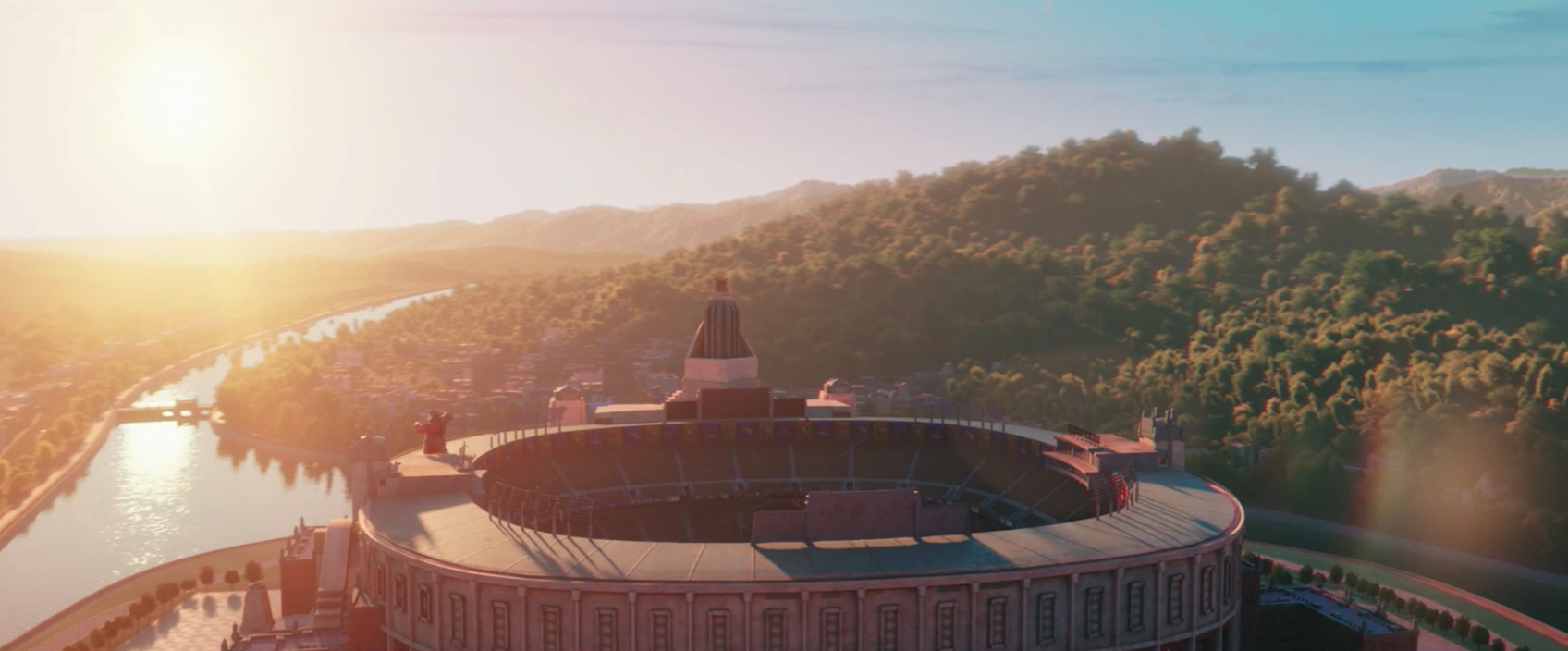
Architecture and animation seem vastly different at first glance, but they have much more in common than it may seem. Both require the study of space, light, and color, as well as how we perceive them. And done correctly, they both evoke an emotional response within the viewer. An essential design principle for both architects and filmmakers is lighting, which is central in conveying a story.
Before joining the animation industry, I thought my career would be in architecture. I graduated magna cum laude from Miami University in Ohio with my bachelor’s in architecture and joined Corgan Associates in Dallas. Working in the Corgan Media Lab, I further developed my technical skills in 3D software (3D Studio Max, V-Ray, and Nuke) and explored different visual styles through architectural renderings.
In 2005, I got the opportunity to visit Dallas-based Reel FX Animation to help finish Everyone’s Hero as a lighting artist and learn the pipeline of a larger studio. I was inspired by the boundless creativity of the animation industry and joined the Reel FX team in 2006. Since then I’ve been a lighting lead, lighting supervisor, and now a visual effects supervisor. To date, I’ve helped bring more than 15 (and counting) animated feature films to life.
LESSONS ON LIGHT ARTISTRY
Although it’s one of the most powerful and transformative storytelling tools in filmmaking, lighting goes largely unnoticed. You may ask, “What does the lighting department do exactly?” Let’s get into it.
In essence, the role of lighting artists in animation is to create the physically based light rays within a scene to emulate a real life set. Without this, nothing would be visible to the viewer: Imagine a beautiful room with no overhead lights, lamps, or windows.
My technical role is creating and controlling light rays in a scene, but the primary purpose of cinematic lighting is to tell a story. Good lighting design helps direct the audience’s eye, creates depth in a scene, enhances the mood, conveys a sense of time and season, accentuates character animation, and helps to compose the framing of a shot.
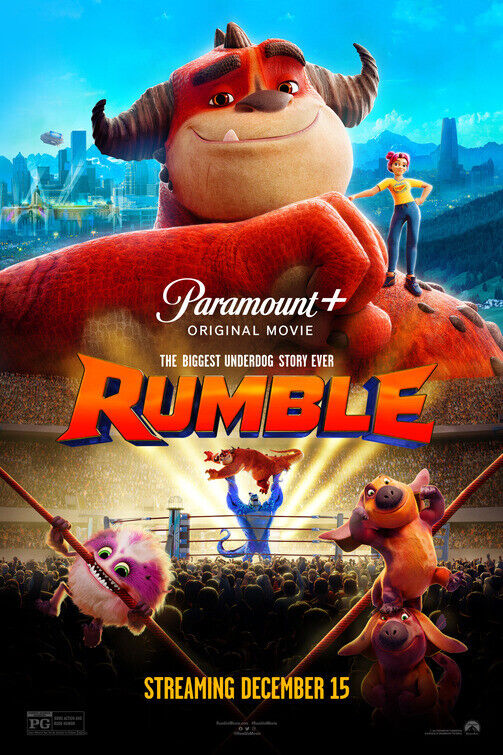
Lighting artists establish the origins, strengths, and colors of light and the role they will play within a scene. The combination of lens choice, character framing, and lighting creates the foundation for the film.
As one of the final stops in the animation process, lighting artists bring together all the data provided by other departments (modeling, surfacing, rigging/animation, character effects/CFX, visual effects/VFX, etc.) and use a render engine such as Arnold to compose rendered images pixel by pixel. Those images then go to compositing, where final color grading and FX are integrated.
Different aspects of lighting can provide a powerful storytelling tool. To put things into context, I’ll use examples from my work as lighting supervisor on Rumble, directed by Hamish Grieve and created almost entirely remotely during the COVID-19 pandemic. Released in 2021 by Paramount Animation, the film follows the underdog journey of Winnie and Rayburn from obscurity to the pinnacle of monster wrestling.
FOUNDATIONS OF LIGHTING
Before the lighting team starts work, the creative team lays the foundation for the visual style of the film. A style guide and color script are the guiding documents for the entire filmmaking process.
Style Guide
Every animated film begins with creating a style guide, which details each aspect of the film’s look. This includes the inspiration, time period and architectural style, as well as the level of detail (high detail/photorealistic versus low detail/stylized), lighting style (high contrast, photo realistic, etc.) and color palette (saturation, range of tones, etc.). In Rumble, art director Fred Warter envisioned a world inspired by Art Deco architecture while retaining a modern, stylized feel.
Stoker, the hometown to the protagonists Winnie and Rayburn, is built with a horizontal profile, giving it a more human scale that is cozy and intimate. Slitherpoole, hometown of antagonist Tentacular, has a more vertical profile that gives a sense of power, vertigo and monster scale. The audience might never connect that the city designs evoke familiarity and comfort or power and intimidation, but these feelings help immerse the audience in the story.
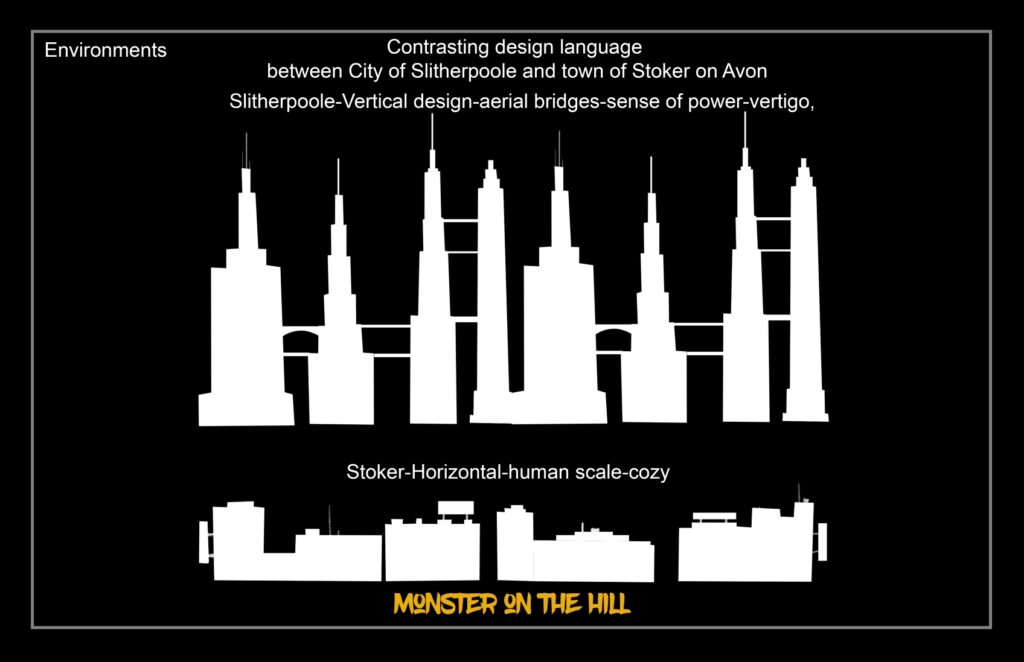
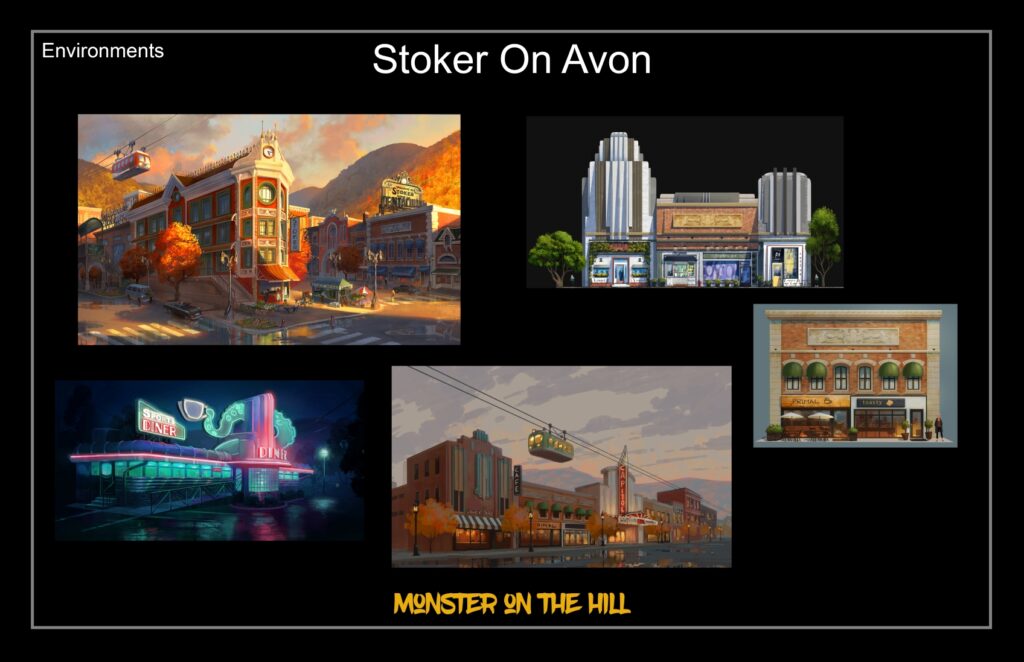
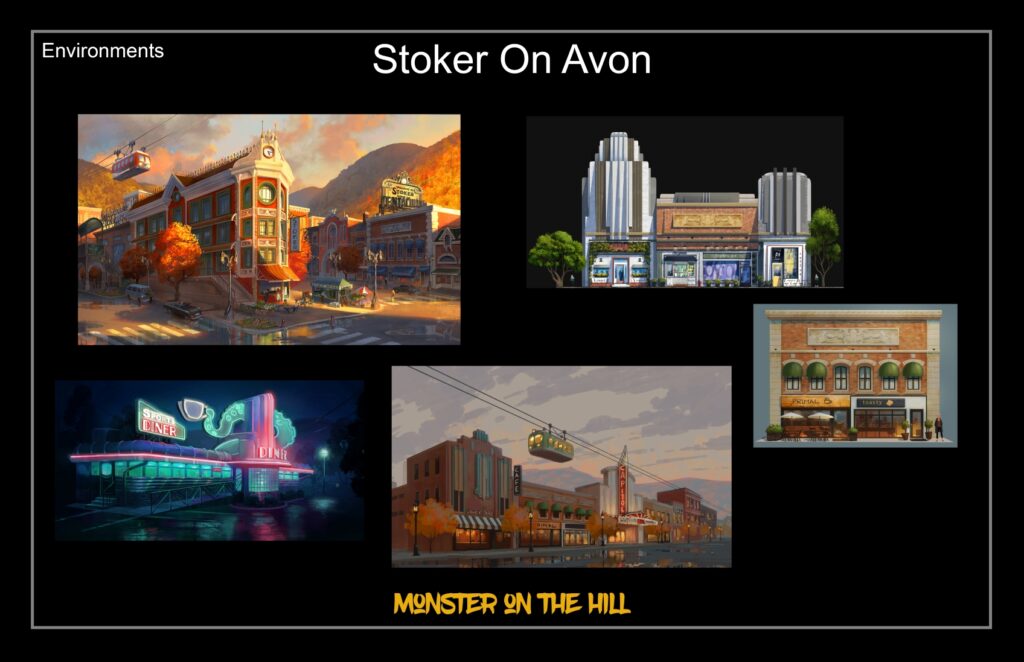
The style guide also defines the lighting’s general look. For Rumble, it called for “strong, believable lighting with a lot of contrast, using inspiration from current photography and modern illustrations” The team used natural lighting to provide a realistic backdrop to a fantasy world where monsters and humans live together. Grounding the film in reality invites the viewer to suspend disbelief and enter a world that feels familiar yet also is one of a kind. It was the lighting team’s job to explore areas of high contrast and saturation to follow the emotional arc of the story.
Color Script
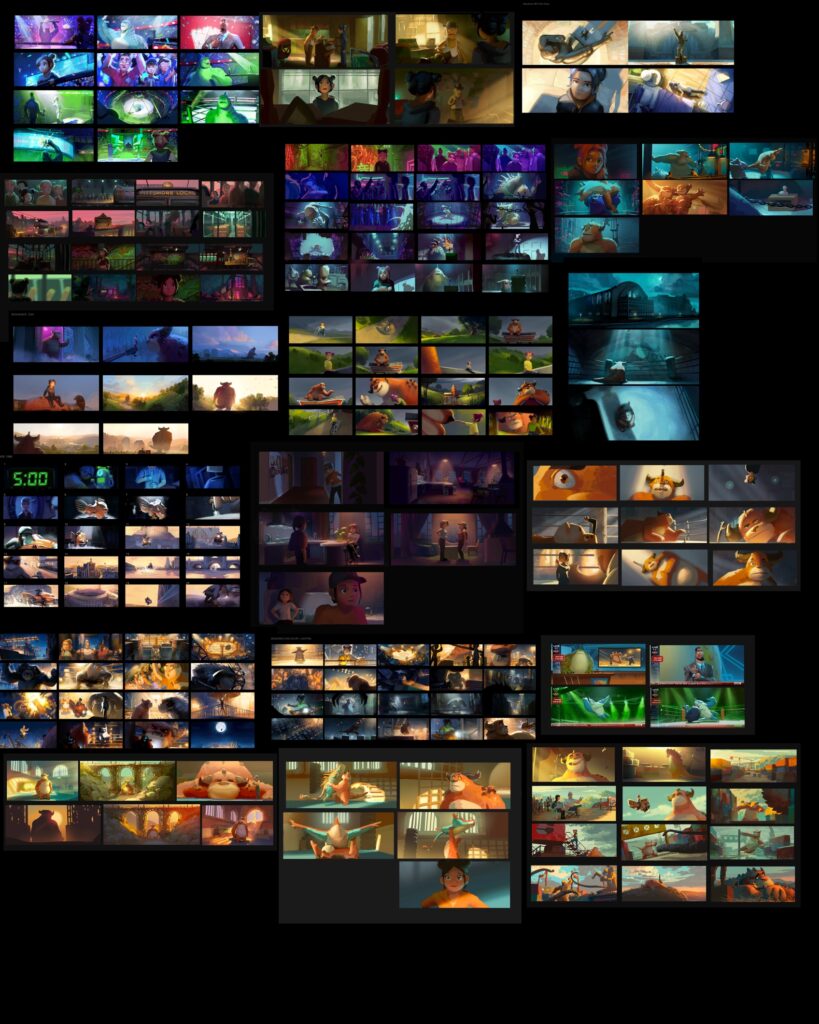
Another essential tool is the color script, which the visual development team uses to map out the color and lighting for each sequence and emotional beat of the film. Using frames provided by the layout team, the art director and the team painted over the basic shapes of the scene to create a visual guide for the shot, with the final product known as a color key.
These color keys are assembled into a final master document called the color script. Lead lighting artists refer to the color keys when setting up the lighting for their sequences. Before the lighting begins for each sequence, we meet with the director to review the color keys and discuss how they relate to the story.
These color keys are assembled into a final master document called the color script. Lead lighting artists refer to the color keys when setting up the lighting for their sequences. Before the lighting begins for each sequence, we meet with the director to review the color keys and discuss how they relate to the story.
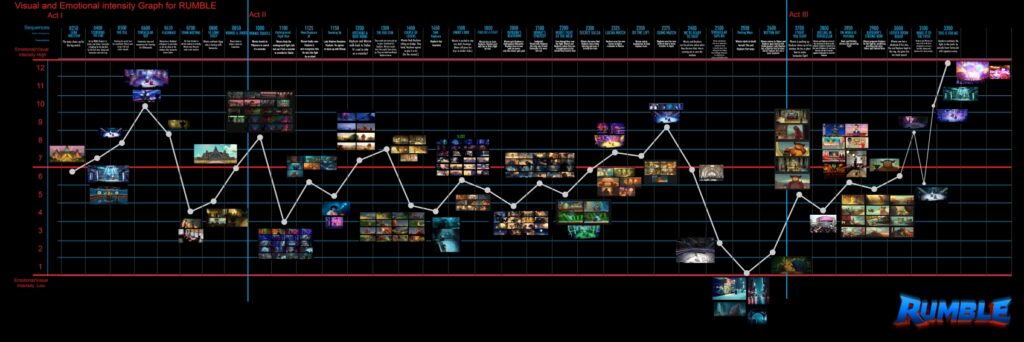
Each sequence starts with an environment lighting pass, which is like the “set lighting” for our digital worlds, where we review the result of these lights on our set through all the cameras. We then put the environment light setups into our key shots with additional lights to refine the characters’ lighting rigs and add shaping. Once the director approves the key shots, other artists use them to complete their shots. This ensures visual continuity across the sequence, which is essential for the audience to quickly process what they are seeing.
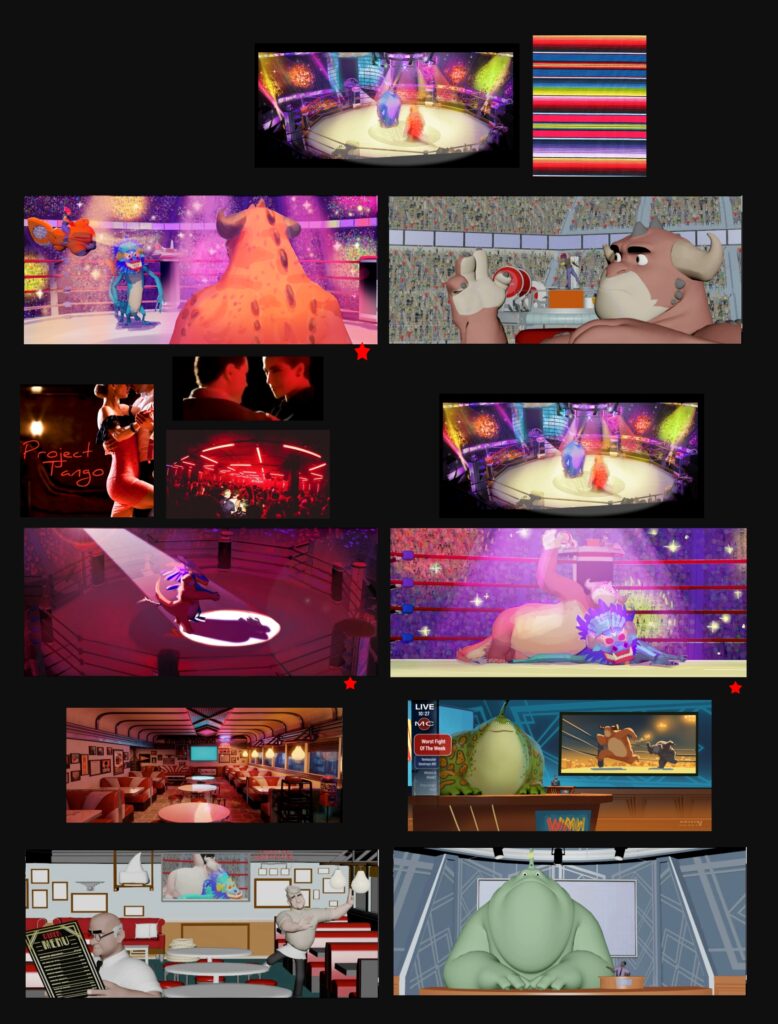
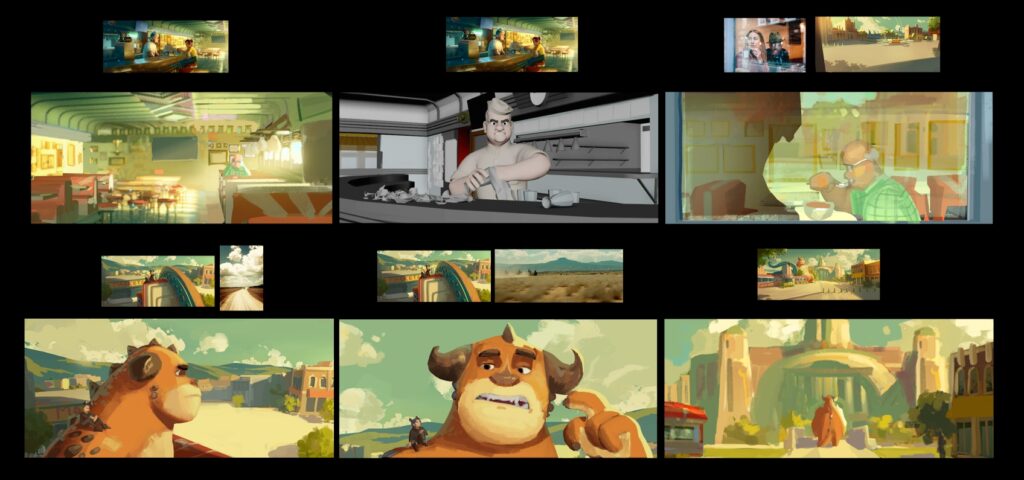
Within individual shots, additional adjustments are made to character lighting to complement the animation. For instance, intense uplighting or silhouette lighting can underscore that a character is a villain. The silhouette lighting used during Tentacular’s arena entrance for Rumble’s final battle scene heightened the tension of this pivotal moment.
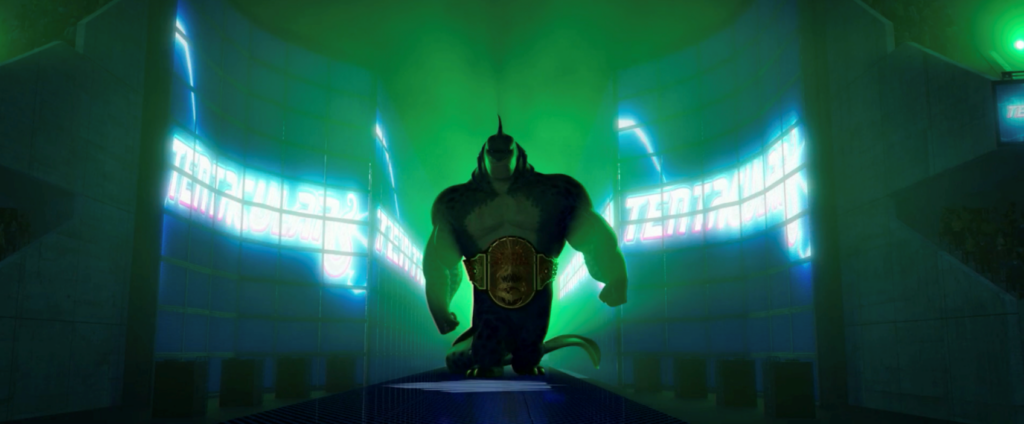
LIGHTING TOOL KIT
The style guide and color script serve as the foundation for lighting, but what other lighting elements drive the storytelling? Here are some elements that the team takes into consideration as they place lights into a scene.
Types
Lighting artists can choose from a variety of light types, including key lights (the primary light source, generally focused on the main character), fill lights (the secondary light source, which highlights details and fills in the shadows created by the key light), and backlights (a light positioned behind the subject highlighting the edge of their silhouette).
Quality
Light quality is impacted by a variety of parameters, such as hardness or softness, position and angle, intensity and color. When a light is placed closer to a surface, the intensity of the light feels stronger and the shadows are sharper. A larger, softer source of light creates more diffused light with soft shadows.
Lighting in a digital world allows us to easily control the color, softness, density and shape of shadows. These choices can create distinct moods; for example, the soft, warm light of a candle feels intimate and romantic compared to bright, sharp spotlights circulating an arena that bring excitement and anticipation.
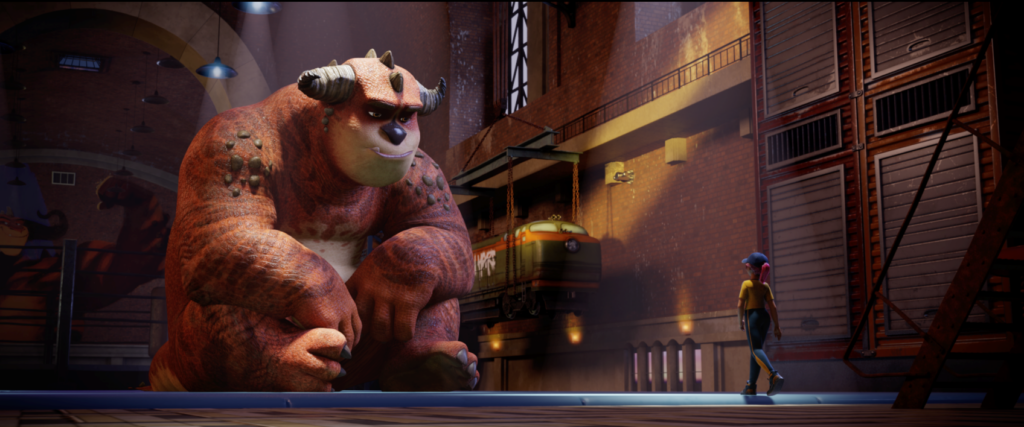
Quantity
Another consideration is the quantity. We try to be efficient with each light placed because the more there are, the longer it will take to process the final shots. Some lights are placed in practical locations, as if they were produced by an actual source of light, such as the sun, lamps in a room, a TV screen. Other lights are placed simply for composition, such as around a character to add shape or to fill in shadows. Lighting artists will often use a three-point lighting rig with a key light, fill light and backlight that will result in a balanced, less dramatic image. By contrast, two-point lighting using just a key and fill light will be more dramatic with heavy shadows. These effects can be either amplified or tempered by the strength and direction of the light.
Hue
The hues and tones of lights elicit physiological, psychological and emotional responses from the audience. While people all can have different reactions to color, there are common associations with certain colors: Yellow may feel sunny and happy, while red conjures feelings of anger or passion.
Our eyes are drawn to more saturated colors, while desaturated color tones tend to blend into the background. It’s common in film for an art director to select a palette of colors that defines the look of the film. Think of the dynamic color palettes in the supersaturated worlds created by Wes Anderson versus the dark, gothic environments of Tim Burton’s films.
Rumble had a highly saturated color palette with hue shifts from sequence to sequence. To add interest to the frame, an accent color often drew focus away from the dominant hue. Desaturated colors were employed at the end of some sequences to transition into a new sequence that had a bold color choice and different emotional beat.
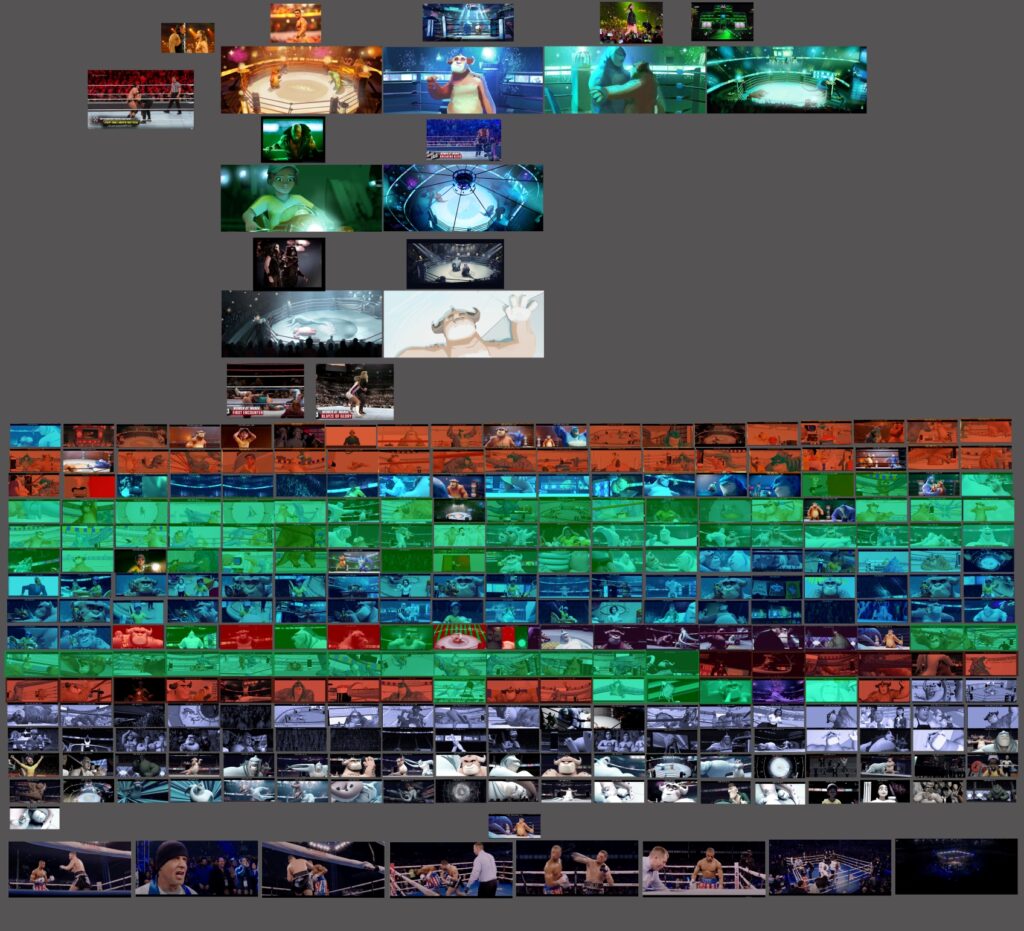
In the final fight sequence of our hero monsters, the art director used different hues of lighting to show which monster was controlling the fight. It’s a visual cue that helps build excitement toward individual characters. As the fight ends, the vibrant colors shift to a neutral tone. The crowd goes dark, and the neutral spotlight on the center ring makes viewers focus on the fight’s final moments.
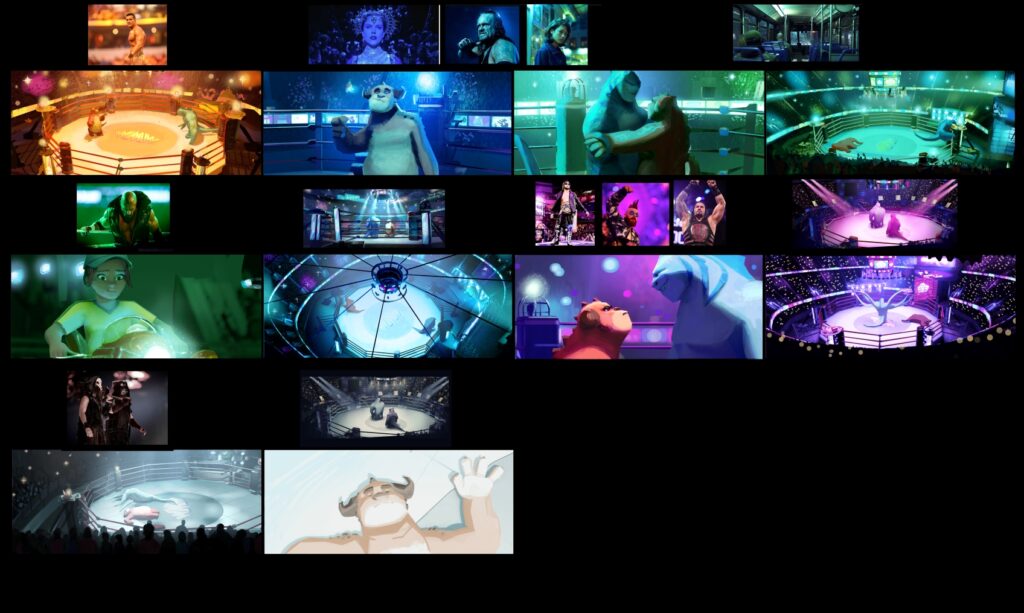
Depth of Field
On a live-action film set, the director of photography chooses a focal length and aperture to determine the viewer’s focus. During the layout phase in animation, lens choices are made with a purely aesthetic perspective, free of the restrictions of a live-action set. For instance, a shorter lens where the character is close to the camera and the background is out of focus creates a more intimate scene. The lighting and compositing staffers are responsible for setting up the depth of field in each shot. By controlling what is in focus and what falls out of focus, they play a crucial role in directing the audience’s focal points in frame.
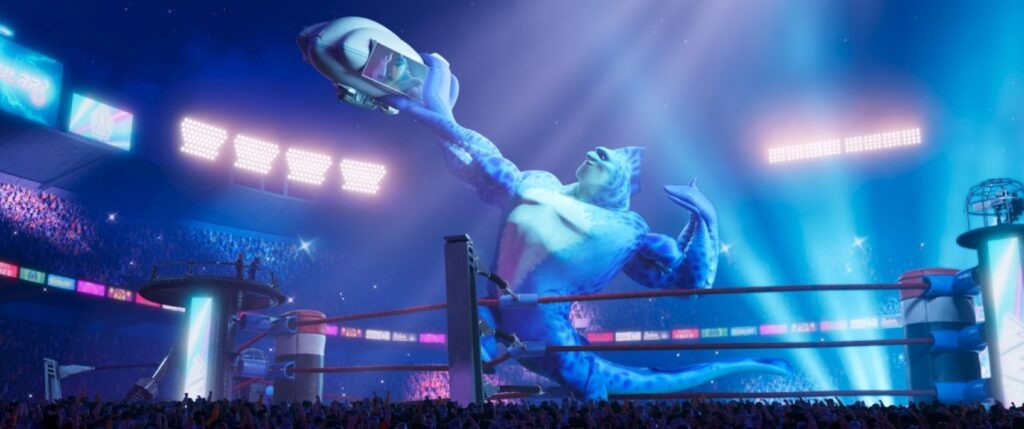
Atmosphere
Have you noticed colors lose saturation and contrast as you look into the distance? The farther away an object is, the farther light has to travel to reach you. Water and dust particles in the air reflect light and increase the density that light must pass through. This atmospheric effect has to be simulated within a film’s 3D world.
One way to add atmosphere is in compositing by applying a percentage of fog for each pixel based on the distance from the camera. The density and color can also be controlled. Adding this layer of atmosphere creates depth and a more natural horizon line, like in this still overlooking the landscape surrounding the monster wrestling arena in Rumble.
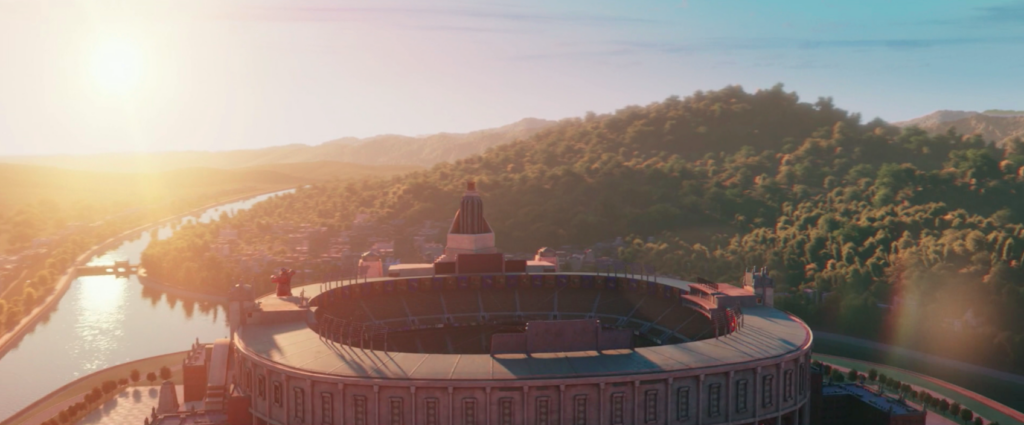
Put into Perspective
With nearly 18 years of experience as a lighting designer, I often think about how lighting impacts my world, both in the physical and digital senses. On my commute, I notice how the soft morning light bleeds through the downtown Dallas skyline. The morning haze changes the depth of the skyline and makes the city feel a little mysterious. At nighttime, it’s the soft, dim light that makes reading books to my daughters feel cozy.
In the digital worlds that I help to create in animation, monsters jump in and out of stadium spotlights, making the audience anxious or excited. The lighting directs our eyes exactly where they need to be. In another scene, a beautiful sunrise adds to the tenderness of two characters having an intimate conversation. The most rewarding time in my job is seeing the film for the first time after it is complete. It always amazes me how much lighting brings everything together.
Every day, lighting influences mood and focus without people even realizing it. Next time you watch a movie, think about the lighting. What kind of story is it telling you? How does it make you feel? By knowing the many components of lighting that go into animation, you will truly appreciate the role it plays in a story.
I encourage you to incorporate animation’s playful spirit and concepts as a digital medium into your physical designs. Strive to use light, color, atmosphere, and depth in compelling ways that push the story you are telling into rich and innovative directions. You will find that animation and architecture are really not that different after all.